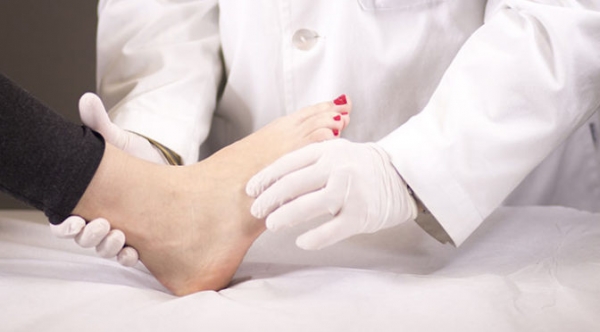If you’ve noticed that your toes have been looking a little strange to you lately, or that they have become unusually rigid and tight, you may have hammertoes. A hammertoe is as unpleasant as it sounds: as the namesake suggests, a hammertoe is a deformity which causes the toes to bend sharply downwards rather than straightforward, resembling the silhouette of a hammer.
It is a common but painful condition affecting over 200,000 Americans per year, typically resulting from years of wearing ill-fitting shoes with narrow toe boxes, such as fashionable heels. Fortunately, hammertoe is easily diagnosed and treated, if you know what to look out for. Here is a look at hammertoe causes, symptoms, and treatment:
What Is Hammertoe?
While hammertoe can affect any of the toes, it is most commonly seen afflicting the second, third, or fourth toe. This deformity results when the middle joint of the toe becomes dislocated, forcing the toe to bend sharply downward and buckle in this position. The underlying cause is a muscle and ligament imbalance surrounding the toe joint, where the muscles have tightened from being forced into a flexed position – such as when wearing cramped shoes – to the point where they can no longer straighten out. Pain can result from excessive friction and rubbing against the top of the deformed toe, and corns and calluses may form to further exacerbate the condition.
A number of factors can contribute to the development of hammertoe:
- An uncommonly high foot arch
- Flat feet
- Cramped or ill-fitting shoes
- Pressure from a bunion
- Toe injury
- Arthritis
- Tight tendons or ligaments in the feet
Symptoms & Diagnosis of Hammertoes
Hammertoe is easily recognizable, but you’ll want to confirm with a podiatrist for an official diagnosis. Common symptoms which indicate hammertoe include:
- Pain when walking
- Pain when stretching the affected toe
- A toe which bends downwards and is difficult to move
- Difficulty wiggling the toes or flexing the foot
- Calluses or corns
- Toes taking on a claw-like appearance
There are two types, or stages, of hammertoes: flexible and rigid. A flexible hammertoe means that the condition was caught within its early stages, where the toe is still able to move at the middle joint. This form of hammertoe is still mild, and has a number of various treatment options available. When the condition progresses to the point where the tendons become rigid enough to push the joints out of alignment, the toe will become immovable. At this stage, surgery is usually required.
Your podiatrist can often visually diagnose hammertoe with a physical exam. However, if you’ve had a toe injury, imaging tests may also be required.
Hammertoe Treatment & Prevention
The course of treatment depends upon how far your hammertoe has progressed.
Mild hammertoe that has been caught in its early stages and still remains flexible has a much greater variety of treatment options available. The first step is identifying the cause responsible for the hammertoe. If cramped footwear is the issue, simply switching to better shoes can remedy the condition. If flat feet or high arches are to blame, custom insoles or toe pads can offset the damage. For corns, over-the-counter medications or pads may suffice. Again, consult a podiatrist to determine the source of your hammertoe, to properly advise you on the appropriate treatment option.
Severe hammertoe that has become rigid and inflexible will require surgical intervention to restore motion to the toe. Hammertoe surgery may involve repositioning of the toe, removal of damaged bone, and realignment of the tendons.
The best prevention tip for hammertoes is to make sure that your shoes are fitting properly, and that your feet’s special needs are met. This means getting insoles or orthotics if you require them, and ensuring that your shoes are not too snug nor the heels too high. In general, it is recommended to avoid any heel over 2 inches in height. If you notice any pain, discomfort, or deformity, consult a podiatrist at your earliest convenience to avoid further complications.
Schedule a Consultation with Dr. Vikki and Dr. Connie
If walking has become painful and you suspect that hammertoes are to blame, schedule a consultation with trusted podiatrists Dr. Vikki and Dr. Connie at the Superior Foot & Ankle Care Center today.
